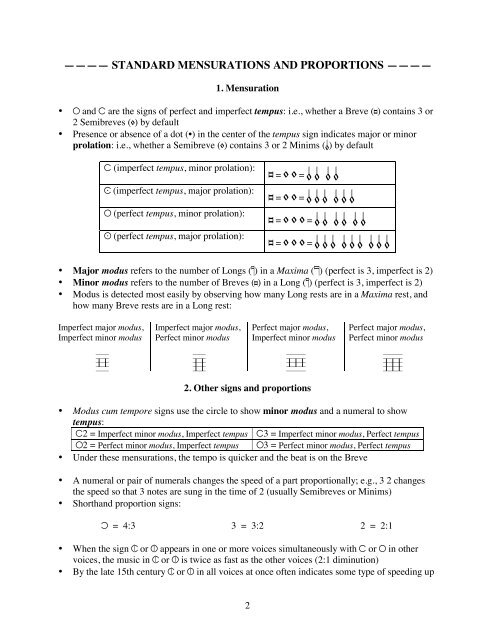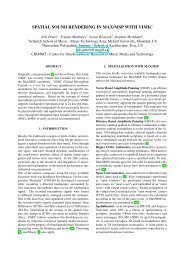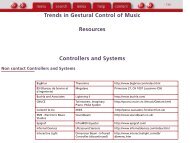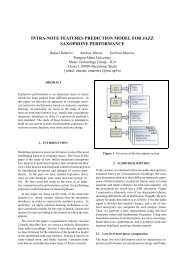Basic Mensural Notation Reference
Basic Mensural Notation Reference
Basic Mensural Notation Reference
You also want an ePaper? Increase the reach of your titles
YUMPU automatically turns print PDFs into web optimized ePapers that Google loves.
———— STANDARD MENSURATIONS AND PROPORTIONS ————<br />
1. Mensuration<br />
• 2 and & are the signs of perfect and imperfect tempus: i.e., whether a Breve (F) contains 3 or<br />
2 Semibreves (G) by default<br />
• Presence or absence of a dot (•) in the center of the tempus sign indicates major or minor<br />
prolation: i.e., whether a Semibreve (G) contains 3 or 2 Minims (H) by default<br />
& (imperfect tempus, minor prolation):<br />
* (imperfect tempus, major prolation):<br />
2 (perfect tempus, minor prolation):<br />
4 (perfect tempus, major prolation):<br />
2<br />
F = G G = H H H H<br />
F = G G = H H H H H H<br />
F = G G G = H H H H H H<br />
F = G G G = H H H H H H H H H<br />
• Major modus refers to the number of Longs (E) in a Maxima (D) (perfect is 3, imperfect is 2)<br />
• Minor modus refers to the number of Breves (F) in a Long (E) (perfect is 3, imperfect is 2)<br />
• Modus is detected most easily by observing how many Long rests are in a Maxima rest, and<br />
how many Breve rests are in a Long rest:<br />
Imperfect major modus,<br />
Imperfect minor modus<br />
Imperfect major modus,<br />
Perfect minor modus<br />
Perfect major modus,<br />
Imperfect minor modus<br />
Perfect major modus,<br />
Perfect minor modus<br />









